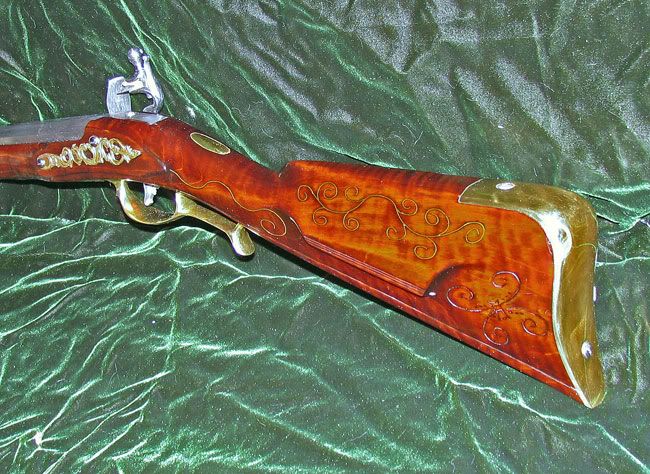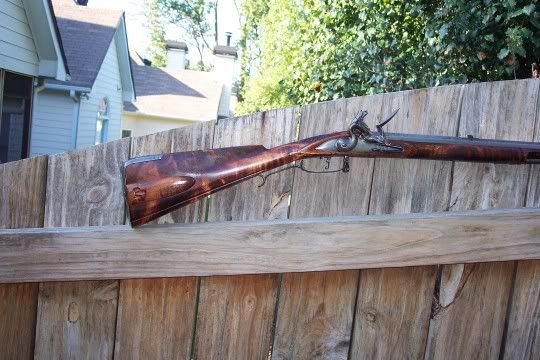You obviously have very good skills with tools. Take the time to study some originals and you'll see the suggestions the guys made are very good. Precarves are made to have some room to work different styles, and it's hard for the beginner to appreciate they need to be radical in the shaping- not just clean up the lines that are there.
The lock panels and the comb need the most work. How to work the comb has been well covered.
The width of the lock panels has also been covered. Now you need to re-shape the front molding of the lock panel at the same time. It almost never is a simple half-circle on a longrifle. You'd do well to leave the molding extending that far forward, but radically re-shaping it. At the top edge of the molding, where it comes off the top edge of the stock, it must come off concave, not convex. You want a slim look, oval, egg-shaped like a robin's egg, long, for the front molding.
When you trim the width of the molding at the bottom, this will necessitate re-shaping the belly of the stock underneath. Make it nice and rounded.
You'd do well to radically reshape the top of the moldings. They give a chubby impression and the top of the stock at the tang is too flat. The top of the stock at the breech should slope markedly down to the lock and sideplate. This results in the top line of the molding on the sideplate side meeting the corner or angle of the barrel where the side flat and the angle flat meet.
You'd to well to trim the top line of the stock to show about 60% of the side flat of the barrel. This slims a gun. Show off the barrel- don't hide it down in the stock.
These sorts of tendencies, to leave too much wood, and not know how to shape these areas, are common to all of us starting out. I could show you some pictures of my first gun that perfectly duplicate the way you've shaped this first one.
 [/img]
[/img]  [/img]
[/img]  [/img]
[/img]  [/img]
[/img]  [/img]
[/img]  [/img]
[/img]



















